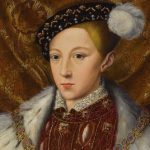 Crime
Crime  Crime
Crime  Technology
Technology 10 Hilariously Over-Engineered Solutions to Simple Problems
 Miscellaneous
Miscellaneous 10 Ironic News Stories Straight out of an Alanis Morissette Song
 Politics
Politics 10 Lesser-Known Far-Right Groups of the 21st Century
 History
History Ten Revealing Facts about Daily Domestic Life in the Old West
 Weird Stuff
Weird Stuff 10 Everyday Products Surprisingly Made by Inmates
 Movies and TV
Movies and TV 10 Actors Dragged out of Retirement for One Key Role
 Creepy
Creepy 10 Lesser-Known Shapeshifter Legends from Around the World
 Animals
Animals 10 Amazing Animal Tales from the Ancient World
 Gaming
Gaming 10 Game Characters Everyone Hated Playing
 Crime
Crime 10 Terrifying Serial Killers from Centuries Ago
 Technology
Technology 10 Hilariously Over-Engineered Solutions to Simple Problems
 Miscellaneous
Miscellaneous 10 Ironic News Stories Straight out of an Alanis Morissette Song
Who's Behind Listverse?

Jamie Frater
Head Editor
Jamie founded Listverse due to an insatiable desire to share fascinating, obscure, and bizarre facts. He has been a guest speaker on numerous national radio and television stations and is a five time published author.
More About Us Politics
Politics 10 Lesser-Known Far-Right Groups of the 21st Century
 History
History Ten Revealing Facts about Daily Domestic Life in the Old West
 Weird Stuff
Weird Stuff 10 Everyday Products Surprisingly Made by Inmates
 Movies and TV
Movies and TV 10 Actors Dragged out of Retirement for One Key Role
 Creepy
Creepy 10 Lesser-Known Shapeshifter Legends from Around the World
 Animals
Animals 10 Amazing Animal Tales from the Ancient World
 Gaming
Gaming 10 Game Characters Everyone Hated Playing
Top 10 Tragic Facts about England’s 9 Days Queen
Lady Jane Grey was the niece of Henry VIII of England, a king known for having six wives and separating his country from the Catholic Church. When he died, his young son Edward VI took power. Being such a young and apparently quite sickly king, Edward received a lot of help from courtiers such as the Duke of Northumberland, who plotted to place Edward’s cousin Jane on the throne after the king’s death. Of course, not without marrying Jane to his own son first. In the summer of 1553, Lady Jane Grey was crowned Queen of England.
Jane is remembered as the “9 Days Queen” because, well, she only lasted nine days. Edward VI had a sister who believed she should take the throne before a cousin, and she succeeded. That sister is known today as Mary I, or Bloody Mary. She definitely earned her moniker, as she had Jane and several others beheaded for trying to take the throne. Jane was only 16 years old when she died, but her story has many twists and turns that prove incredibly surprising.
Related: Ten Tough & Terrible Queens Who Ruthlessly Ruled Their World
10 Jane Was Almost the First Queen of England
Aside from the possible reign of Empress Maude (or Matilda by some accounts), which is often disputed, Lady Jane Grey would have been the first Queen of England in her own right rather than by the right of marriage to a king. She automatically became queen after the death of her cousin Edward VI in July 1553, taking the place of her other cousin, Princess Mary, because of letters patent signed by Edward before his death.
This was extremely controversial; by law, Jane was only 5th in line to the throne as one of Henry VIII’s grand-nieces. However, it was very important to Edward VI that Jane be queen because she was a Protestant, and his sister was a Catholic. Edward was fiercely determined that England would remain a Protestant country.
The then-princess Mary (later Mary I) rallied forces against Jane soon after she was crowned. Initially, Jane’s position looked very promising. Her backers controlled the government, and the royal guard, the Tower of London, and the navy were all sworn in her name. However, any confidence this provided quickly wore out as Mary’s forces approached aggressively. [1]
9 Jane Became Grotesquely Ill from Fear of Her Cousin Taking the Crown
Many accounts illustrate the exact ailments that Lady Jane experienced during her nine days as monarch. She was exceedingly paranoid about her husband’s family, and her skin even began peeling off once when she worried her mother-in-law had poisoned her. She had extreme anxiety and experienced intermittent fevers caused by the uncovered moat at the Tower of London, where she was staying.
On the eighth day of her reign, it is reported that she was seen with eyes red from weeping and appearing more dead than alive. Every night, she had the keys to the Tower brought up to her for a sense of security.
Why she was so terrified is easily determined, for her cousin Mary was quickly turning out to be the more likely winner of this dispute. Just as Mary’s forces organized and grew, the privy counselors supporting Jane began to leave her side in droves.[2]
8 Jane Made Her Husband Cry Because She Wouldn’t Name Him King
On the morning of July 11, 1553, the third day of her reign, Jane’s mother-in-law, the Duchess of Northumberland, barged in on her while she was using the toilet. While Jane and her husband, Guildford Dudley, had been married for six weeks at the time, it is clear they had not yet consummated the marriage due to a long separation after the wedding.
The Duchess was hopeful that her son would be named king since there had never yet been a queen in her own right, so she interrupted Jane’s personal time to demand Guildford be crowned. It was apparently quite a dramatic scene, with curses and shouting aplenty.
Despite this pressure, Jane was very well educated in the affairs of the state. She refused point-blank and reminded the Duchess that only Parliament had the power to declare a monarch, so she was factually unable to do so. “The Crown,” she said, “was not a plaything for boys and girls. She could make her husband a Duke, but only Parliament could make him a King.”
Jane’s husband promptly burst into tears and ran from the scene, but the Duchess made another attempt later that day. It ended with the Duchess taking her son’s hand and leading him away, saying she “would not leave him with an ungrateful wife.”[3]
7 Jane Never Wanted to Be Queen
Interestingly, Jane only learned she was queen and that Edward VI was deceased three days after the fact. Jane was grief stricken; she dearly loved her cousin Edward and knew of his plans to name her his heir and what came with it. The counselors knelt before her and offered the crown and their fealty, but she exclaimed, “The crown is not my right and pleases me not. The Lady Mary is the rightful heir!” It took the efforts of her parents, husband, and in-laws to convince her it was her duty to take the crown.
Nine days later, Jane’s father told her it was time to give up, and she happily handed over the crown of England, even breathing a sigh of relief. The stress she endured for little more than a week appeared to be at an end, although the consequences of her treason would soon come to lead her to her grave.[4]
6 Jane Was Extremely Well Educated in Languages and Religion
Jane knew five languages: French, Italian, Greek, Latin, and Hebrew, the last of which she was teaching herself. She was also extremely intelligent and an avid reader. Her religious knowledge surpassed many adults at the time. In her final days imprisoned at the Tower of London, she debated many theological topics with the Catholic priest charged with trying to convert her.
Her high intelligence is often forgotten in later retellings of her history, which were usually geared toward emphasizing her more ideal feminine qualities.[5]
5 Jane Was Officially Queen but Only by Loophole
Jane was named Edward VI’s heir by letters patent. However, according to the will of Henry VIII, Edward’s sister Mary was to succeed her brother. In the end, it was a contest between two dead kings over which woman should be Queen of England.
One often-overlooked aspect of Jane’s queenship was that by English law, she didn’t quite meet the legal requirements of a king, which was the only status that needed defining up until that point. At the age of 16, she was still only a minor. English law determined that any king under 18 would be placed under a regency, which is when an adult close to the king would rule in their name until the child came of age.
Jane, however, was a queen, of course, and not a king, and thus didn’t technically fall under this law. It didn’t really matter either way, as Jane’s father-in-law, the Duke of Northumberland (also the man who encouraged King Edward to name Jane the heir), intended to be calling most of the shots. Some suggest that Jane’s mother, who was also in line for the throne but had been skipped, should have been her regent, or even her husband Guildford, who was 18.[6]
4 Everyone, including Her Father, Abandoned Her in Her Final Days as Queen
The closer Mary came to the Tower of London, the more supporters Jane lost from fear of any charges of treason if Mary established herself as Queen. On the ninth day of her reign, only three major men were left by her side, her father-in-law, the Duke of Northumberland, a man called Cranmer, and her father.
However, by the afternoon, Cranmer had left, and the Duke was seen throwing up his hat in Cambridge and declaring Mary a “merciful Queen.” Her father was the last by her side, but eventually, he too realized the jig was up and let Jane know her time as queen was over.[7]
3 Jane Had Two Sisters Who Also Met Less-than-Ideal Fates
Jane’s two sisters, the Ladies Katherine and Mary Grey, had their own troubling experiences, even without the trauma of losing their oldest sister. Katherine, the middle sister, was fully expected never to meet a fate such as Jane’s, as both Queen Mary I and Queen Elizabeth I were, in turn, expected to have children of their own to fill the line of succession. However, as history will tell you, they never did.
In the end, Katherine was removed from the line of succession anyway when she married a man called Edward Seymour against the wishes of Elizabeth I. As the main heir to Elizabeth, she would have been expected to follow the wishes of the queen. But she did not, so Elizabeth had her thrown in prison and the two sons begotten from the marriage were declared illegitimate. Katherine died in prison at only 28.
The youngest sister, Mary Grey, is historically assumed to have been a dwarf or otherwise disabled by something such as scoliosis. Her short stature is frequently commented on; however, she married and lived at court. Mary Grey was only eight years old when her sister Jane was executed, so this surely loomed over her for most of her life. She also witnessed her sister Katherine imprisoned for marrying a man without permission, but this did not stop her from trying the very same thing shortly after that.
She was also thrown in prison and then, later, allowed to live with several different noble families. Her husband died several years later. However, after many years of living as a single, independent woman, she was allowed to return to court as long as she used her maiden name. She died at age 33 in service to the queen.[8]
2 Jane Saw Her Husband’s Beheaded Corpse Soon Before She Was Executed
Before his execution, Guildford requested to see Jane and was permitted, but Jane refused to see him lest she lose her confidence and resolve. She was determined to die a martyr for Protestantism and needed to brave her way through the last day of her life lest she be tempted to accept Mary’s offer of mercy in return for a Catholic conversion.
Despite this, on the morning of her and her husband’s execution, she glanced out the window and saw the cart on which his headless body was being returned to the Tower of London. This was a shocking sight and a regret of Queen Mary, as she did not wish for Jane to see her husband’s body. Jane was executed later that day.[9]
1 There Are No Genuine Surviving Paintings or Images of Jane
Despite her fame, no contemporary images or accounts of her appearance survive to this day. There are multiple paintings attributed as being of her, but most of them were later found to be of other notable women. In fact, the most famous one of her is now known to be a portrait of Katherine Parr, the sixth wife of Henry VIII, whom Jane lived with for a period in her childhood. There are, however, later depictions of Jane not based on historical fact, such as a painting made in 1833 by Paul Delaroche.
Coins are often used as important pieces of evidence concerning claims to European thrones. Despite a forgery in the 19th century and a rumor arising from a 1986 movie about Jane, there exist no coins depicting her or her reign. In the 19th century, there were many fictionalized accounts of her appearance in an effort to idealize her as the perfect woman. In 1858, David Bartlett wrote that she had “the innocence of childhood, the beauty of youth, the solidity of middle, the gravity of old age, and the life of a saint.”
While there exists a strong desire to put a face to England’s 9 Days Queen, unfortunately, we have only accounts of her words and actions. She was a young woman with the crown of England thrust upon her, and it cost her everything.[10]








